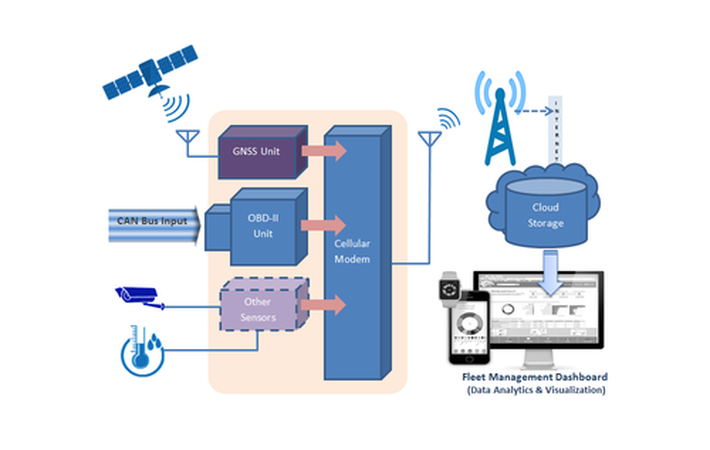
Published on 11/17/2016 | Operations
Fleet Management System (FMS) is one of the essential parts of businesses which directly or indirectly deal with automobiles. Precise fleet management minimizes various operational risks and increases cost efficiency. With proper utilization of analytics, alerts, and diagnostics, fleet management converts businesses to be more reliable and sustainable. Like any other business, predicting risks and working towards mitigation is essential for fleet businesses. Ample use of data analytics for early detection of faults and predictive mechanism helps business to reduce maintenance cost and downtime.
Typical modular fleet management unit consist of OBD-II (On-Board Diagnostics – Standard revision – II) module which connects to Controller Area Network (CAN) bus. Microcontroller, sensors, and various devices from vehicles use this bus (communication channel) to communicate with each other. OBD-II module captures diagnostic information from the CAN bus example, data engine control unit, and transmission.

GNSS (Global Navigation Satellite System) receiver unit like GPS, GLONASS, assist to capture geographic coordinates. Synchronous capture of GNSS data and diagnostic data can help to immediately identify exact location of a vehicle breakdown or other events. Mapping it against reference data from the department of transportation can be utilized to analyse driver behaviour and their adherence to traffic regulations.
Every business has its unique requirement and objective behind Fleet Management System. Organizations need to upgrade FMS module based their particular use case. Trailer transporting food needs additional sensors to monitor temperature of on-vehicle refrigerators whereas a trailer carrying hazardous liquids has its own sensor requirements.
Cellular module is essential for real-time monitoring of a vehicle’s essential parameters, theft detection, driver safety, and to report breakdown. This data needs to be sent to cloud (or physical storage) so that fleet operators can analyse required parameters in real-time, perform predictive analysis, and identify mitigation requirements for smooth operation of fleet.
Effective use of data analytics and visualization tools – dashboards is the brain of intelligent fleet management system. Visualization parameters varies with respect to business needs but a few basic conclusions like driver behaviour, fuel efficiency, fleet health, maintenance requirements and breakdown will be always there on dashboards.
The cost of E2E fleet management system has been reduced due to efficient analytics platform based on quality open source solutions (e.g. MongoDB, Hadoop), reduction in cost of electronic assemblies (chipset cost, antenna cost), economical cellular data connectivity (eUICC, dedicated data plans for M2M, IoT), reduction and flexibility in cloud storage cost due to competition, and most importantly cross domain interest of companies from various vertical (e.g. Cellular operators), electronic product manufacturers, and IT services are exploring additional revenue streams in automotive domain.
This article was originally posted on LinkedIn.